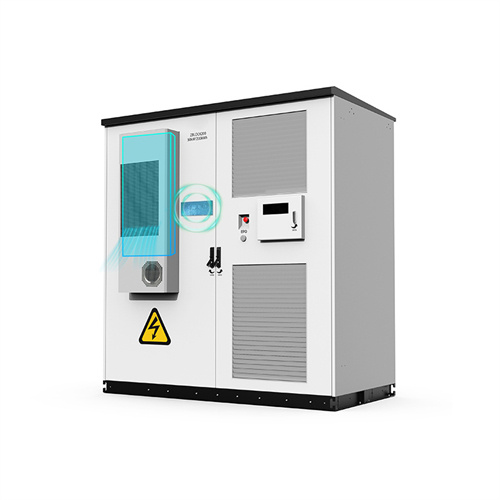Greenland stationary storage battery systems

Zinc-ion batteries for stationary energy storage
In this paper, we contextualize the advantages and challenges of zinc-ion batteries within the technology alternatives landscape of commercially available battery chemistries and other stationary energy storage systems

Schematic diagram of a typical stationary battery energy storage system
Download scientific diagram | Schematic diagram of a typical stationary battery energy storage system (BESS). Greyed-out sub-components and applications are beyond the scope of this

Lithium-Ion Battery Storage for the Grid—A Review of
Battery energy storage systems have gained increasing interest for serving grid support in various application tasks. In particular, systems based on lithium-ion batteries have evolved rapidly with a wide range of cell technologies and

Stationary, Second Use Battery Energy Storage
Battery energy storage systems have been investigated as storage solutions due to their responsiveness, efficiency, and scalability. A. Lithium-Ion Battery Storage for the Grid—A Review of Stationary Battery

Market and technology development of stationary battery storage systems
The international market for stationary battery storage systems (BSS) is growing rapidly. Within less than a decade, grid-connected BSS have evolved from a niche product to a

Planning of Stationary-Mobile Integrated Battery Energy Storage
1 天前· Under extreme weather events represented by severe convective weather (SCW), the adaptability of power system and service restoration have become paramount. To this end, this

Stationary, Second Use Battery Energy Storage
Battery energy storage systems have been investigated as storage solutions due to their responsiveness, efficiency, and scalability. Storage systems based on the second use of discarded electric vehicle batteries have

Design of combined stationary and mobile battery energy storage systems
To minimize the curtailment of renewable generation and incentivize grid-scale energy storage deployment, a concept of combining stationary and mobile applications of

NEXT GENERATION BATTERY TECHNOLOGIES FOR STATIONARY ENERGY STORAGE
1.1 Energy storage system applications While conventionally the important metrics for battery storage are energy density and power density, for grid storage systems the cost, lifespan and

Battery Energy Storage Systems Development
BESS Singapore. Of the 11 ASEAN members, Singapore is taking the lead in the battery energy storage systems (BESS) space. Earlier this year, the city-state launched the region''s largest battery energy storage

Stationary Storage Battery Management System
BMS FOR STATIONARY STORAGE SYSTEMS UP TO 1500 V Munich Electrification offers battery management systems for stationary energy storage. Specifically for that application, we have adopted the SBS and CMB for ESS

The development of stationary battery storage systems in
to our published work, "The development of stationary battery storage systems in Germany – A market review" [1]. The original paper provides detailed information on the methodology cited

Batteries in Stationary Energy Storage Applications
For the types of batteries used in grid applications, this reaction is reversible, allowing the battery to store energy for later use. Batteries are installed as battery energy storage systems (BESS), where individual

6 FAQs about [Greenland stationary storage battery systems]
Are battery energy storage systems suitable for SDEs?
Batteries, extensively researched, offer diverse performance and can be combined with other ESSs. Most batteries used for energy storage like lithium-ion battery exhibit high energy efficiency and rapid response, making Battery Energy Storage Systems (BESSs) suitable for SDES, with numerous BESS implementations worldwide.
Are lithium-ion batteries a reliable energy storage system?
However, the intermittent nature of renewables requires stationary energy storage systems capable of reliable energy dispatch at the grid level. Similar to the electrified mobility market, lithium-ion batteries have, as of now, been the most popular option for utility-scale energy storage installations.
Which energy storage system is best for stationary energy storage?
Each system offers a unique set of advantages and challenges for stationary energy storage. On the other hand, batteries, an electrochemical system, may be the most well equipped for stationary ESS applications.
Are battery energy storage systems a viable alternative to grid and buffer capacity?
Battery energy storage systems (BESSs) have been investigated as an alternative to solve the grid and buffer capacity challenges of the future [ 16, 17, 18 ]. By using batteries, it is possible to balance demand and thus ensure that transient renewable energy, such as wind and solar energy, can be used when needed, not just when generated [ 16 ].
Are battery energy storage systems sustainable?
Battery energy storage systems have been investigated as storage solutions due to their responsiveness, efficiency, and scalability. Storage systems based on the second use of discarded electric vehicle batteries have been identified as cost-efficient and sustainable alternatives to first use battery storage systems.
Are NaS batteries suitable for stationary energy storage applications?
d by Tokyo Electric Power Company and NGK Insulators Ltd. in 2002. (Nikiforidis, et al., 2019) NaS batteries are well suited for stationary energy storage applications owing to their high theoretical energy density, high energy efficiency, cycling flexibility,
Related Contents
You may like
- Thermochemical Energy Storage: The Future-Proof Solution for Long-Duration Energy Needs
- Energy Storage Photosynthesis: Nature's Blueprint for Tomorrow's Power Grid
- Lipid Used for Energy Storage: The Ultimate Battery Your Body Never Told You About
- Navigating California's Energy Storage Mandate: Progress, Challenges, and Fire Safety Realities
- Battery Energy Storage Capacity: The Secret Sauce for a Smarter Grid
- Commercial Energy Storage for Sale: Powering Tomorrow's Businesses Today
- Huawei FusionSolar Modular Storage: Texas Industries' New Secret Weapon Against Peak Demand Charges